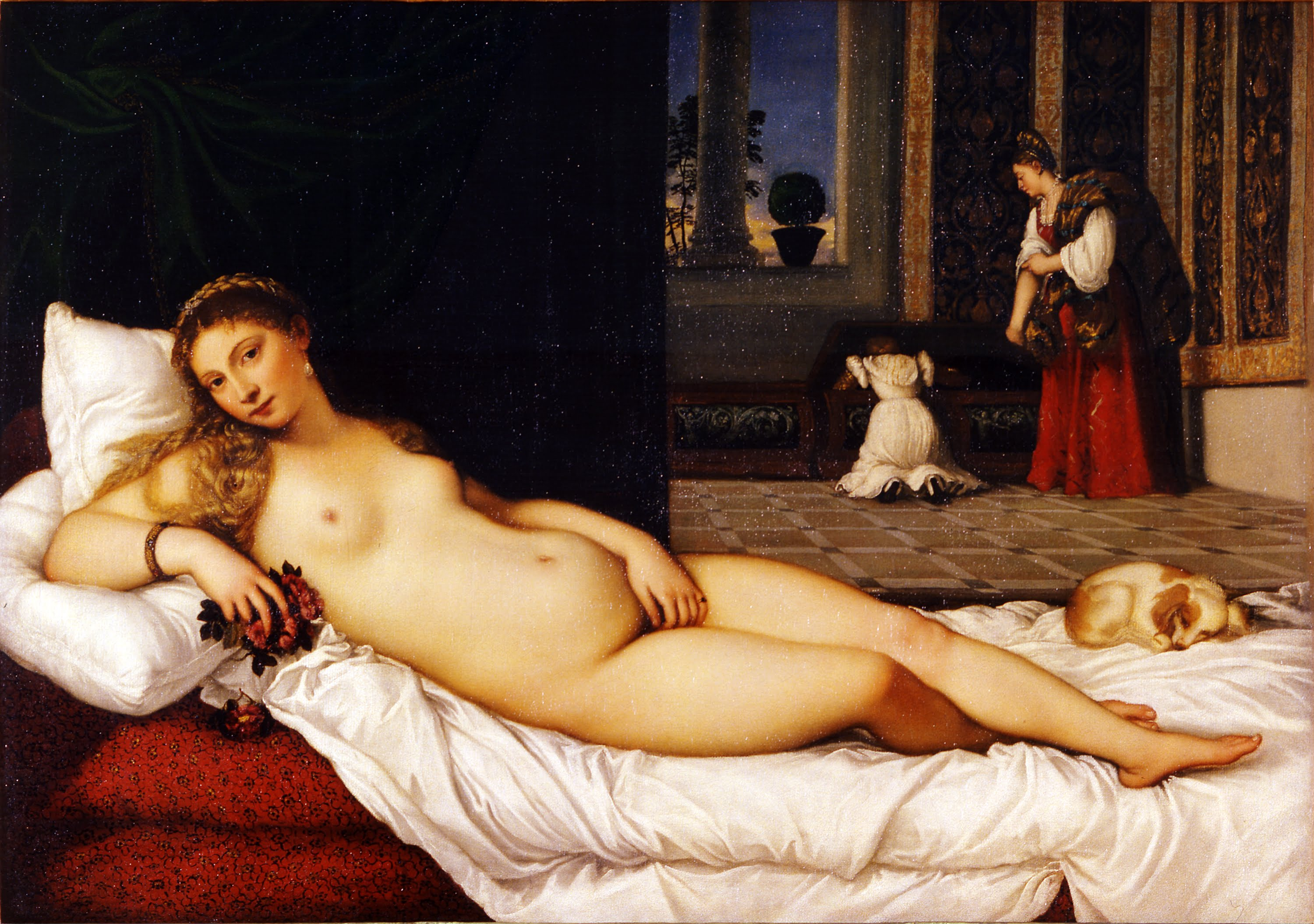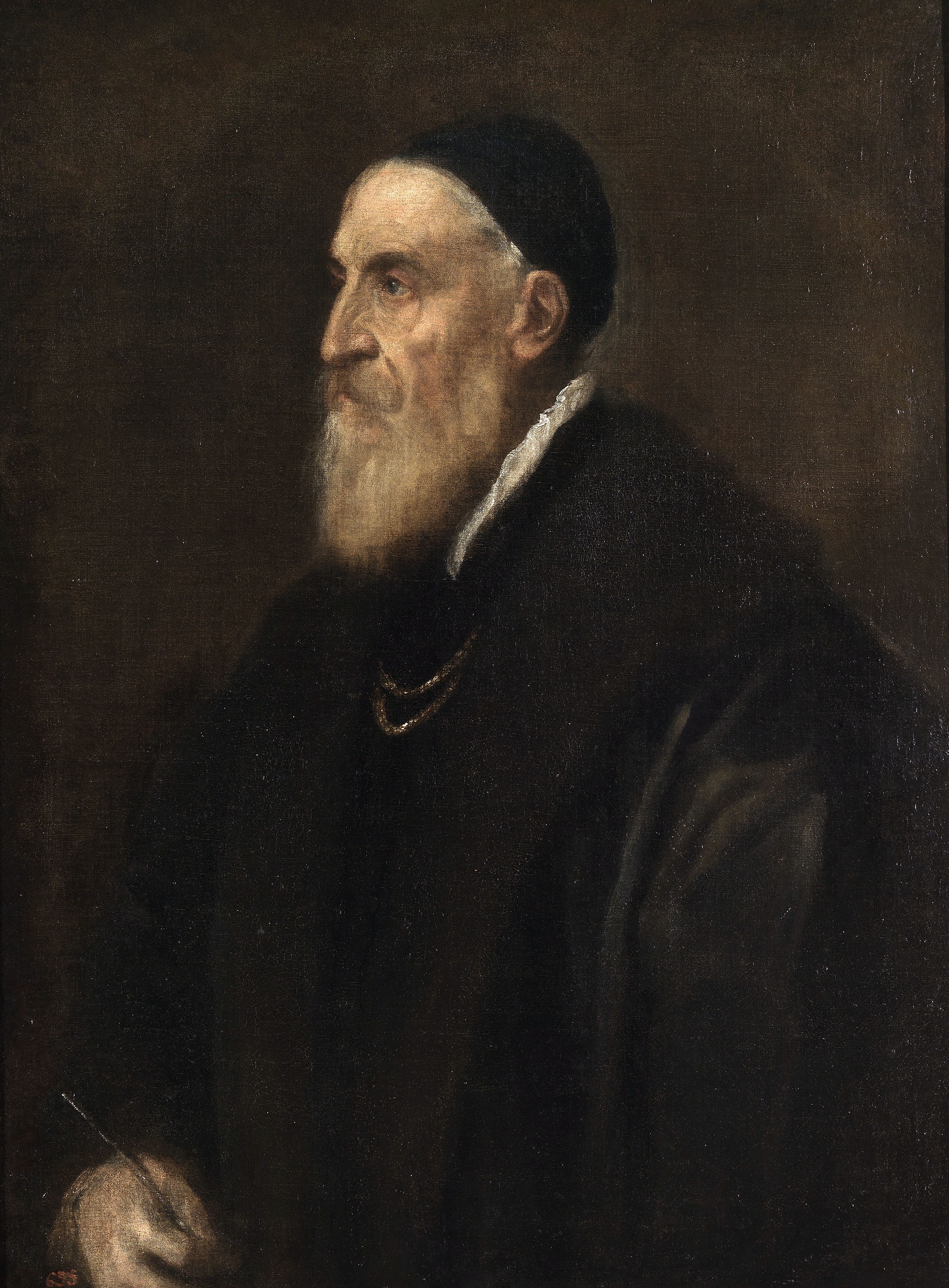The painting was commissioned by Guidobaldo II della Rovere, the Duke of Urbino, possibly to celebrate his wedding in 1534. It would originally have decorated a cassone, an Italian chest traditionally given as a wedding present. The maids in the background are shown rummaging through a similar chest, apparently in search of Venus' clothes. Curiously, given its overtly erotic content, the painting was intended as an instructive ‘model’ for Giulia Varano, the Duke's extremely young bride. The model for the painting has been identified as Angela del Moro, a highly paid courtesan in Venice and a known dining companion of Titian. The figure's pose is based on Giorgione's Sleeping Venus (c. 1510), which Titian completed. In this depiction, Titian has domesticated Venus by moving her to an indoor setting, engaging her with the viewer, and making her sensuality explicit.




Venus of Urbino
oil on canvas • 119.20 x 165.50 cm
 Titian
Titian